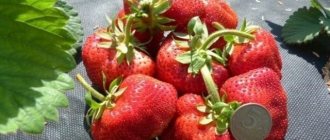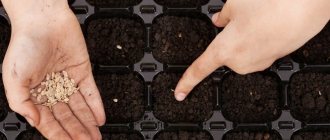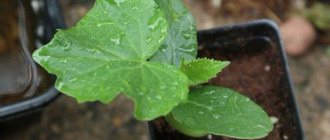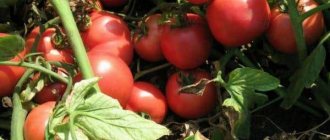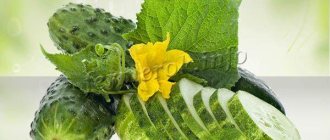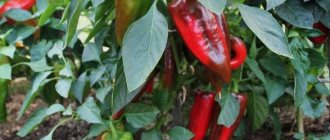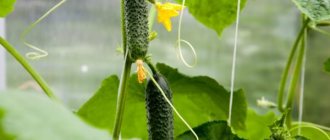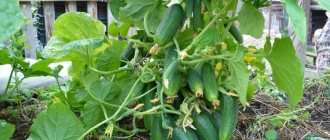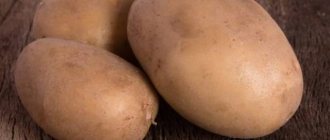Author's rating
Author of the article
Yakov Pavlovich
Professor, Head of the Department of Vegetable Growing
Articles written
153
Many productive varieties of cucumbers, which were bred in the second half of the last century, are cultivated by experienced gardeners to this day. Such crops include the Libella hybrid, which was registered in 1976. The plant immediately gained recognition and became widespread among farmers. And even today, the Libella cucumber variety is chosen primarily because of the minimal cost of care, its resistance to most diseases and the excellent taste of greens.
Description and characteristics of Libella F1 cucumber
Libella F1 cucumbers are a mid-season hybrid of the parthenocarpic class that requires pollination by insects. O says that collecting seeds of this variety for further cultivation is useless, since planting material does not inherit the genetic characteristics of primary selection. Libella is grown both in open ground and in greenhouse conditions.
External characteristics of the variety:
- elliptical-shaped greens of dark green color;
- the surface of the cucumbers is covered with small spines;
- fruit size up to 15 cm, weight up to 150 g;
- the skin is thin, the flesh is juicy, dense and sweet, there is a crunch;
- greens have a slight bitter taste (this indicates the concentration of cucurbitacin, a drug with an antitumor effect);
- the tops of the fruits are marked with whitish inclusions;
- the type of flowering is predominantly female - with ovaries;
- medium-sized leaves with irregular edges;
- The plant is medium-sized, branched with long vines.
The purpose of the fruit is universal. Fruiting is long-lasting, starting 50 days after germination and continuing until autumn. On average, you can collect up to 8 kg from one square meter. The best yield indicators are observed in the Central and North-Western regions of Russia, for which the cultivation of this variety is intended. Tasting score of the Libella variety is 5 points. Due to its strong branching, it is recommended to grow the bush vertically, installing a support.
Features of sowing
The Libelle variety was transformed into Libelle F1 in 2010. A slightly better type of cucumber was bred from the original seeds. He began to tolerate temperature changes. Therefore, there are three types of growing seeds:
- in open ground;
- greenhouse method;
- with trellises.
You can often find the technique of planting through seedlings. Before planting on a personal plot, the plant germinates in pots for 3-4 weeks. Predetermining factors are regular ventilation and temperature control. Seedlings tolerate drafts very poorly. If the soil contains a sufficient amount of nutrients, then the seeds are planted directly into the ground.
Before planting in open ground, the soil is pre-fertilized
It is important to observe crop rotation. To do this, it is better to plant cucumbers in the place where potatoes or tomatoes grew the year before.
They saturate the soil with potassium, nitrogen and phosphorus. Their deficiency can be compensated with the help of appropriate fertilizers. Contribute:
- ash;
- peat;
- humus.
Excess moisture and acidity in the soil have a bad effect on fruit growth. The soil is first loosened and dug up. Planting is carried out at a time when there is no risk of frost. The air temperature should remain around 14 degrees. If the seeds have a colored shell, they can be immediately planted in the ground. If not, then soak them in hot water for 20 minutes to kill bacteria.
The trellis design makes it much easier for gardeners to grow finicky crops. You can follow this method in regions with warm climates.
Note! The frame itself must be very strong in order to withstand natural disasters and the development of lashes. Otherwise, a collapse on the cucumber bushes with subsequent destruction is possible. The frame is made of wooden blocks or metal pipes
A trellis net is pulled over it and secured with twine. In order for the plant to develop comfortably, the height of the structure must reach 2 meters. In this case, the main thing is to trim the bushes when they reach a height of 30 centimeters
The frame is made of wooden blocks or metal pipes. A trellis net is pulled over it and secured with twine. In order for the plant to develop comfortably, the height of the structure must reach 2 meters. In this case, the main thing is to prune the bushes when they reach a height of 30 centimeters.
The variety is not particularly suitable for growing in greenhouses or greenhouses. It is parthenocarpic, so pollination by bees is necessary. The row spacing when planting should be about half a meter, so as not to thicken the planting. The lashes are tied so that they develop in the right direction and do not interfere with each other. Greenhouses have windows so that pollinating insects can contribute. You can make an artificial hive, which will greatly facilitate the care of the crop.
Pros and cons of the variety
The Libella cucumber variety has been in high demand among gardeners for decades.
The popularity is explained by the characteristics and advantages of this culture:
- Universal use of greens (both fresh and for pickling).
- Excellent transportability and long shelf life of the crop.
- High assessment of the taste qualities of greens.
- Can be used for commercial purposes.
- Strong immune system and resistance to pest attacks.
- Possibility of growing in cold climates.
- The plant does not require pinching.
- Collection of greens in the form of gherkins is available.
- The type of ovary is bunched (up to three units in one node).
- Long fruiting period.
- Low cost of seeds.
But the Libella variety also has negative aspects: the need for pollination by bees, the presence of bitterness (especially with insufficient watering), a tendency to overgrow, defects in coloring, which affects the presentation of the greens. Also among the disadvantages is intolerance to hot weather - if you leave cucumbers in the open sun, white spots will form on their surface. In this regard, when grown in open ground, the variety requires cover with foliage. In addition, the Libella hybrid has a weak root system, which is easily damaged when replanting.
Advantages and disadvantages
Libelle cucumbers have both strengths and weaknesses . See the table below for more details.
| Advantages | Flaws |
|
|
The nuances of growing a plant
When growing the Libella cucumber variety, it should be taken into account that it cannot be planted in closed greenhouses without ventilation, or on balconies. The plant will need sun and insects for pollination. In addition, the lower shoots and flowers should not be removed, since this is where cucumbers grow. The upper part should also not be pinched - the male flowers are located on it. If it is necessary to speed up the ripening period, then the seedling method of cultivation should be used.
See also Why cucumber leaves turn yellow and how to deal with it
Preparing and planting seeds
First you need to decide on the site - the place should be windless, away from the accumulation of groundwater and open to the sun. Also, acidic soil is not suitable for growing cucumbers (you will need to add dolomite flour or slaked lime). Purchased seeds in a colored shell cannot be prepared or germinated, since they have previously been treated with special compounds. This seed is sown dry. Untreated seeds of the Libella variety should be prepared and germinated.
First, the seed is sorted: the seeds are placed in salt water and those that float to the top are thrown away. Next, heating is carried out: the seeds are kept for 15 minutes in water at a temperature of 50 degrees. Since Libella is resistant to fungal diseases and root rot, the variety does not require pre-treatment with potassium permanganate or copper sulfate. For a couple of days, the seeds can be placed in a growth stimulator. The container for planting should be spacious (at least 0.5 liters), since the variety does not tolerate picking. The seeds are sown to a depth of 1 cm, several pieces are placed in one hole.
Seedling care
After planting, it remains to maintain optimal conditions for the growth of healthy cucumber seedlings. Plant care includes the following steps:
- The seeds sown in the container are covered with film, a plastic lid or glass, then put away in a warm place. Every day the pots need to be ventilated and the soil moistened with a spray bottle.
- As soon as the first shoots appear, the containers are placed in a place with an air temperature of no more than 17 degrees. This action prevents the seedlings from stretching.
- A week later, the temperature in the room with Libella cucumber seedlings is raised to 20 degrees. It is also important to provide adequate lighting.
- By this time, the first shoots should appear. They need to be examined and the weakest ones need to be cut off at the root with scissors so that only one remains.
- The soil in the containers should be moist, but not wet. In warm weather, the plant is watered once every two days, in hot weather - up to two times a day.
- If there is a lack of sunlight and cloudy weather, cucumber seedlings may require additional lighting.
- As soon as two true leaves appear (it is important to distinguish them from cotyledon leaves), a fertilizer mixture is added to the soil with the seedlings. A teaspoon of nitrophoska is diluted per liter of water.
It is important to prevent seedlings from overgrowing, since they will take root less well on the site - the plant will often get sick or die. A week before planting, you should start hardening off the greenery seedlings in order to “accustom” them to outdoor conditions.
Landing in the ground
At the end of April or beginning of May, seedlings or seeds begin to be planted in open ground. This should not be done before the threat of night frosts passes (the air temperature should not fall below 12 degrees, in the daytime - not lower than 22). Planting scheme for the Libella cucumber variety:
- dig up the soil and add a liter of mullein, copper sulfate and chicken droppings;
- cover the area with film and wait six days;
- the holes are made according to the 50x30 pattern, the distance between the cucumber bushes is 30 cm;
- seedlings are watered and sprinkled with soil.
To strengthen the immune system of greens before planting, the soil must be saturated with humus.
Expert opinion
Stanislav Pavlovich
A gardener with 17 years of experience and our expert See also What can be planted next to cucumbers in open ground and in a greenhouse
Ask a Question
Important! To increase the yield of Libella cucumbers, it is recommended to plant the plant near varieties with predominantly male flowering.
How to grow Libella seedlings
In the Urals or Siberia, cucumbers are grown by seedlings. Sowing of seeds occurs in March-April, taking into account harvesting on days 52-55.
Seeds are sown in separate containers. Peat cups are considered a good option. Cucumbers are a crop that does not tolerate picking well due to the characteristics of the root system. The seedlings are placed on sunny windowsills, under film or glass, which is removed after the first shoots appear.
Information! Seedlings that have 3-4 leaves are suitable for planting.
Trellis method
Trellis are special devices that allow you to place cucumber vines vertically. The Libella variety is especially suitable for growing using the trellis method, this is due to the fact that the root system of the hybrid is poorly developed, in contrast to the actively developing above-ground part. The trellis method is used in the southern parts of the country.
Greenhouse method
In Siberia or the Urals, it is recommended to plant cucumbers in greenhouses. These can be heated rooms with facilities for regular ventilation or greenhouses in the ground. For the second option, use plastic bottles with a cut bottom. The structure completely covers the seedlings, creating a greenhouse effect.
See also
TOP 40 best late varieties of cucumbers for open ground with description
Read
Further care of the crop
The Libella cucumber variety requires standard agrotechnical measures, which include timely watering, weeding, loosening, application of fertilizer mixtures and bush formation. Only with quality care can you get maximum yields.
Watering
The Libella hybrid does not tolerate drought; therefore, it requires regular and abundant watering at the root with exclusively warm water. In hot weather, the soil is often moistened as soon as the top layer of soil dries out. In cloudy weather, watering is reduced. When growing in a greenhouse, water the soil once a week. For 1 sq. m will require up to 6 liters of water, during fruiting - up to 10 liters. After rainfall and watering, the soil is loosened so that the water can evaporate.
Top dressing
Fertilizers are applied at a temperature not lower than 18 degrees. Immediately after planting in the ground, greens need mineral fertilizing, which contains nitrogen and potassium. After a couple of weeks, organic compounds can be added. During fruiting, cucumbers require phosphorus mixtures. Once every two weeks, Libella cucumbers are fed with a solution of fresh mullein. It will not be superfluous to add a solution with onion peels and a mixture of whey and iodine.
Attention! An excess of nitrogen-containing fertilizers leads to a change in the shape of the greens.
Bush formation
The Libella cucumber variety does not require pinching the tops and forming a bush, since the plant is quite branched and climbing. The only thing they do with the bush is remove excess shoots during the growing season. In this case, the stem and lateral shoots are not affected.
Reviews
Valentina, 53 years old
I have been growing Libella since the very first days of my farming. The variety is unpretentious, but at the same time gives a rich harvest. I especially like the possibility of universal use of greens. They reveal themselves well both in salads and when preserved. I noticed that sometimes raw cucumbers can contain bitterness, however, this happens more often in dry and hot summers. After a couple of procedures of abundant watering, the problem quickly disappears.
Anton, 47 years old
Among the large number of varieties, I liked Libella the most. The plant practically does not get sick and produces a rich harvest of beautiful greens with pimples. I sell the surplus vegetables at the market, and they are immediately sorted out. I feed the cucumbers 3 times throughout the season: at the beginning of the growing season, during flowering and fruiting. I mix 1 part of chicken manure with 20 parts of water and let it brew for several hours. I filter the finished organic matter and pour 0.5 liters under each bush.
Overall, Libella has many more advantages than disadvantages. The first include stable fruiting throughout the season, high resistance to adverse factors, pleasant taste of the fruit and the possibility of their universal use. Among the disadvantages of the variety: the tendency of the fruits to overgrow, the presence of a bitter taste (in unripe greens) and the possibility of obtaining a harvest only if pollinated.
Disease and pest control
Despite the fact that the Libella variety has strong immune protection and is therefore resistant to most diseases, cucumbers can still be susceptible to various lesions. The causes of diseases can be different: contaminated seed, lack of fertilizing and light, drafts, abundant watering, pests. Control measures:
- To prevent gray rot, solutions with the addition of soda are used.
- Powdery mildew is eliminated with a mixture of iodine and laundry soap.
- Bacteriosis is eliminated with two Trichopolum tablets.
Due to their early ripeness, the use of chemicals is not recommended as cucumbers can become toxic. To rid the area of insects, the beds are dug up two weeks before planting. In addition, pests cannot tolerate the smell of onions, dill and garlic.
Planting and care: rules, recommendations
In all regions of the Urals, Siberia, as well as the European North, the hybrid is grown through seedlings. You can, of course, do as in the south - sow the seeds directly into the ground. But, firstly, this will not be possible before the end of May or the beginning of June due to the climate. Secondly, sowing in the ground slows down the production of the first ripe fruits.
Growing seedlings
For cucumbers, pots and cups with nutritious soil are prepared, where the seeds are sown.
The timing of sowing depends on the climate of the region, the main thing is that when planting seedlings, their age is about 22-25 days. Usually the dates fall on the last days of April or the first days of May.
Seedlings require regular watering (preferably from a spray bottle) and two or three feedings. Before planting (5-6 days), hardening of seedlings is practiced, when the plants are taken out to open balconies, loggias or verandas.
Cucumber care
Planting cucumbers in a permanent place is carried out only when the cold weather has gone, the soil has warmed up and stable warmth has been established.
When choosing a trellis growing method (and it is the most optimal for this hybrid), supports are installed in advance and the wire is pulled.
Planting scheme: three plants per square meter. You should not thicken it, otherwise adult bushes with fruits will not have enough nutrition and light.
Everyone knows that cucumbers are water feeders and need abundant regular watering. Lack of moisture affects the condition of the plants themselves, the growth and quality of greens. At the same time, an excess of moisture should not be allowed, as in this case the plants can contract various diseases.
Watering schedule:
- before flowering - once every 5-6 days in cloudy weather, and more often (up to two or three times) on clear and hot days;
- in the fruiting phase, water every two to three days, focusing on the condition of the plants and the weather.
It is best to water in the morning, avoiding water getting on the leaves of the cucumbers.
Feeding
It has already been said above that the yield indicators stated in the characteristics can only be achieved if the cucumber is well fed.
“Lunches” for plants are arranged every 10-14 days. The first feeding is carried out no earlier than two weeks after planting the seedlings. They use organic matter, but during the period of budding and the beginning of fruiting, phosphorus and potassium are added.
Instead of mineral water, you can embed wood ash into the soil or water the cucumbers with its infusion.
When grown on a trellis, the Libelle hybrid must be directed upward and the shoots tied up.
Disease Prevention
Despite the fact that Libelle F1 is resistant to diseases, you should not forget about preventive measures. And in the first place will be strict adherence to all the rules of cultivation, crop rotation of vegetable crops (this applies not only to cucumbers), and proper watering.
Treatment with infusions of garlic, Bordeaux mixture, infusion of tobacco dust and soap helps against pests.
Harvesting
Libelle cucumbers bear fruit very abundantly. Summer residents need to remember about the timely collection of greens, since each overgrown cucumber will inhibit the development and growth of subsequent fruits.
Remove the fruits very carefully, using pruning shears or unscrewing the fruits.
Experienced gardeners recommend the Libelle F1 hybrid for growing in all regions. Maybe you should listen to the advice of the “experienced”?
Natalia Severova
Harvesting and storage
The Libella harvest occurs at the end of July - beginning of August. Cleaning greens must be done every day. The fruits tend to overgrow, so you should not delay picking. Harvesting should be done with garden shears. Fresh cucumbers can be stored in the refrigerator for up to 7 days. Spacious wooden boxes are recommended for storing crops. The air temperature in the storage room should not exceed 5 degrees, and the humidity level should not exceed 80%.
Description of cucumbers
The Libelle variety is a mid-season f1 hybrid, which indicates that it is impossible to grow a bush from seeds collected at home. This is due to the fact that high-quality seed material can be obtained only through the primary selection of different varieties.
The variety can be grown in open ground, in greenhouse conditions, through seedlings or planting seeds in the soil.
Areas of use of greens:
- preparing salads;
- canning in its entirety;
- pickling;
- pickling;
- preserved in the form of salads.
Appearance of Libelle
Features of the fruit:
- shape – ellipsoid;
- color – dark green;
- the surface is covered with small spines;
- size in length – from 12 to 15 cm;
- the weight of one fruit is from 100 to 150 grams;
- the side parts have thin white stripes;
- the tips are whitish;
- seeds – small in size;
- the skin is tender and thin;
- pulp – sweet, juicy;
- crunch present;
- there is a slightly noticeable bitterness (this indicates the concentration of cucurbitacin, which is used in the fight against tumor formations).
Bush characteristics:
increased climbing and branching; leaves – rounded, wrinkled, size – medium, edges – serrated irregular; shoots are powerful; The root system is weak, so care must be taken when transplanting to a permanent location. Due to the increased branching, it is advisable to plant the variety vertically, that is, braid the lashes into a support
This will protect the greens from direct sunlight and provide ventilation to the plant.
Due to the increased branching, it is advisable to plant the variety vertically, that is, braid the vines into a support. This will protect the greens from direct sunlight and provide the plant with ventilation.
Ripening time and yield
Libelle ripens from 49 to 55 days after the appearance of the first shoots. Mass harvesting takes place around August. Average yields: per 1 sq. m you can collect 8-10 kg of fruit.
In order for the yield to meet the standards of this variety, it is advisable to plant cucumbers in open ground. This is due to the fact that the variety requires pollination by bees. In this way, the amount of barren flowers can be minimized. As a last resort, it is recommended to use a removable film cover (the film opens during the daytime).
How to grow?
The Libelle F1 cucumber variety, like its fellows, is endowed with underdeveloped roots and loves sunlight, warmth and moisture. The aboveground part of the culture is endowed with a large mass. In order for the plant to develop properly and grow quickly, the air temperature should be 26-27 degrees, and the soil temperature should be at least 20 degrees. At lower rates, the culture begins to hurt. Also, if the weather is inclement for a long time, and the air temperature stays at 10-12 degrees, the plant develops poorly and may not produce the proper harvest. Too hot weather also has a bad effect on the Libelle F1 cucumber. For example, at a temperature of 35 degrees, fertilization is excluded.
Cucumber
One of the most popular vegetables that domestic gardeners love to grow is the cucumber. It has low nutritional value and low vitamin content. However, the high taste of cucumber, combined with a wide range of applications, has allowed this vegetable to gain enormous popularity.
Reasons for "people's love"
This garden crop is preserved - pickled and salted, and used in the preparation of salads.
Cucumbers have a very positive effect on the human body: they reduce acidity in gastric juice, promote easy digestion of food, and are also useful for rheumatism, diabetes, kidney and liver diseases. In addition, this vegetable crop is rich in iodine.
In addition, it is not difficult to grow it, the main thing is to comply with agrotechnical requirements, and then these green crispy gifts of nature will always be present on the table - both fresh and processed.
Characteristics of varieties and hybrids
There are many varieties of cucumbers. They differ both in the size of the green and its tuberosity. Different varieties have different disease resistance, different flowering types and early ripening times. Varieties also differ in the degree of suitability for processing, yield, length of the lash and even the color of the thorn.
Bees mainly take part in the pollination process of this vegetable crop. Such varieties suitable for cultivation in open ground as Semcross F1, Othello F1, Zhuravlenok F1, Farmer F1, Finger, as well as Libelle cucumber F1 have proven themselves to be excellent. The self-pollinating subspecies of this vegetable crop is a subclass of parthenocarps.
However, the most popular variety for open ground is the Libelle f1 cucumber.
Growing system
Like all other vegetable crops, the Libelle F1 cucumber, reviews of its care indicate that it loves light, moisture and warmth, has an underdeveloped root system.
But the part that is located above the ground has a relatively large mass.
For good growth and proper development, the plant requires the following temperature regime: for air - 25-27, and for soil - 20-22 degrees.
The emergence of various kinds of diseases most often begins when a lower level lasts for a relatively long time.
In the case when the weather is inclement and the average temperature is ten degrees for a long time, the vegetable crop begins to slow down in development, moreover, in this case the yield that the Libelle F1 cucumber will produce will also be in question.
Reviews from those who have been growing this hybrid on their plots for a long time indicate that in extreme heat, for example, at 35 °C, fertilization will not occur.
Features of care
This late-ripening variety is characterized by long climbing and female type of flowering. Its greens in the central zone of our country grow up to seventeen centimeters in length and weigh from 70 to 90 grams.
To optimize pollination, as well as to set fruit to the seeds of this hybrid, before sowing, experts recommend mixing planting material of some pollinating variety at the rate of ten percent of the total mass of the sown volume.
The Libelle F1 cucumber, the cultivation of which requires certain agrotechnical knowledge, is very fond of humidity, both in the soil and in the air. Its foliage system is developed quite well, so the evaporation of water occurs very intensively. The key to a high yield, according to experts, is, first of all, regular watering, as well as good soil heating.
Soil characteristics
The Libelle F1 cucumber variety should be planted in soil rich in humus and also having a high degree of fertility. Not least important for the amount of harvest is the preparation of the soil before sowing, as well as the quality of the seeds. According to breeders, planting material that has been stored for three or four years is ideal for this.
Highly fertile, drained soil with a low nitrogen content, as well as liming of very acidic soils - these are the main requirements for the land in which the Libelle F1 cucumber should grow.
Description
The variety can be classified as mid-early. The first greens can be harvested 50 days after germination. Thanks to the strong side shoots, the peak of fruiting with the rapid ripening of greens occurs in August. The average yield of the variety is 6 kg per 1 sq. m, however, with careful care it can increase to 10 kg per 1 sq. m. The yield of marketable products is at the level of 75%.
The ovaries are oval in shape and have dense light pubescence. The length of vegetables at the stage of technical ripeness is 13 cm, and the weight is 100-150 g. Mature fruits are characterized by an elongated ellipsoid or cylindrical shape, dark green color with a light top and stripes. There is light ribbing. The peel of the cucumber is thin and lumpy. The pulp is juicy and crispy. The seeds are small and tender. The vegetables taste pleasant and sweetish. Tasters give them the highest rating. Greens can be eaten raw, salted and pickled.
The harvested crop should be stored in wooden boxes, the bottom of which is covered with paper. The optimal air temperature for storing vegetables is +2-5°C, and humidity is 80%. In such conditions, greens can be stored for up to two weeks (provided that they are not damaged). They should not be stored in closed containers or bags, as this may lead to rotting.
Plant resistance to diseases
Cucumbers are resistant to olive spot and powdery mildew. However, preventive measures must be observed. Powdery mildew is a fungal disease that appears on plants as a white coating. The reasons for the formation are improper watering and temperature changes. To cure the crop, it is sprayed with fungicides and a solution of copper sulfate. Affected foliage is cut off and disposed of.
You may be interested in: Favorable days for transplanting cucumbers in open ground Dates for planting cucumbers in May 2021 according to the lunar calendar The most favorable days for planting cucumbers in the Leningrad region according to the calendar of gardeners and gardeners
Cladosporiosis or olive spot is a fungal disease:
- Appears as a result of temperature fluctuations.
- Brown spots form on the leaves and stems and the plants dry out. Its growth stops.
- To cure this disease, the greenhouse is ventilated and fungicides are applied.
Cucumbers can be infected with anthracnose. The disease is characterized by brown spots throughout the bush. To prevent the disease, it is necessary to maintain low plant humidity. For treatment, use the drug Kuproxat or copper oxychloride 0.4%. Spray twice a month. The origin of the variety suggests vulnerability to diseases, so prevention is necessary. Various drugs will help strengthen the culture’s weak immunity.
Among the main pests are:
- cucumber bug;
- aphids;
- slugs;
- spider mite.
The cucumber bug causes the leaf blades to curl. An infusion of tobacco or chamomile helps to cope with such a pest. Spray the bushes twice every month. In this case, the lower part of the plant is treated.
Attention!
White spots on the leaves indicate the appearance of spider mites. Gradually the entire bush becomes white. A decoction of tomato tops, an infusion of chamomile or wormwood is used against it. Spray the lower part of the leaf once every two weeks.
Aphids eat green matter, providing a favorable environment for bacteria to multiply. Leaves wrinkle and curl. To prevent its occurrence, it is necessary to remove weeds in a timely manner. Red pepper is used to combat it. Apply this infusion twice a month.
Garlic and onions will help against pests. They repel potential plant destroyers. Sometimes dill is sown between the rows.
Pest treatment
Due to its hybrid origin, the variety is resistant to fungal and bacterial diseases, however, additional prevention helps strengthen the plant’s immunity. Early ripeness does not allow the lashes to be treated with heavy chemicals, as the fruits can become toxic to humans. However, you can use solutions made at home:
- Powdery mildew is vulnerable to a mixture of iodine, dairy product and soap. Add 10 drops of iodine, 1 liter of milk or whey and 1 spoon of soap to a bucket of water. Cucumber foliage is treated with this solution.
- To prevent gray rot, use water with the addition of baking soda.
- Bacteriosis can be defeated with 2 Trichopolum tablets diluted in 1 liter of water.
Cucumber Libelle F1. Semetra-Search
THE BEST CUCUMBER VARIETIES AT A GLANCE! I RECOMMEND YOU TO GROW!
Cucumbers comparison between Libella and Herman in a greenhouse
Among harmful insects, the greatest threats to the variety are spider mites and slugs. To get rid of pests, the area is dug up in the fall, without breaking up large clods. This causes the death of weeds and larvae.
How to care?
The late-ripening crop has a long vine. Flowering type: female. The average size of greens is 16-17 cm in length. The weight of one fruit is about 80 grams. In order for pollination and ovary to be optimal, before sowing, grains of another variety of cucumber are added to the Libelle F1 seeds as a pollinator, which should account for 10 percent of the total volume of planting material.
To grow this crop, some agrotechnical knowledge is required. Zelenets loves moist soil and humid air. Thanks to a fairly developed foliage system, water evaporates very quickly. According to experts, in order to get the desired harvest, it is necessary to water regularly. The soil itself should warm up well.
